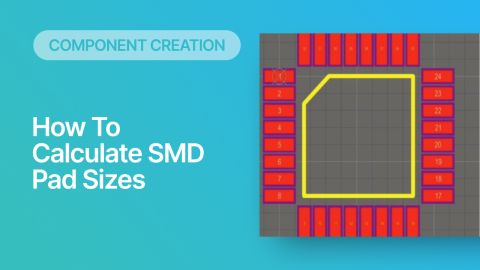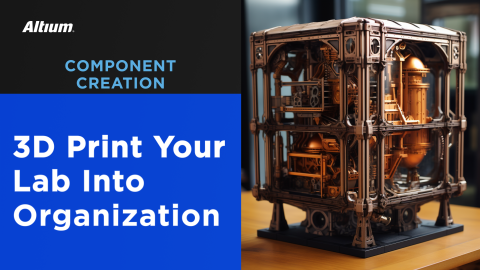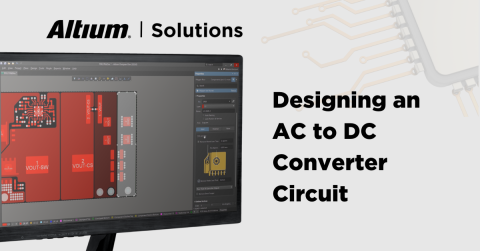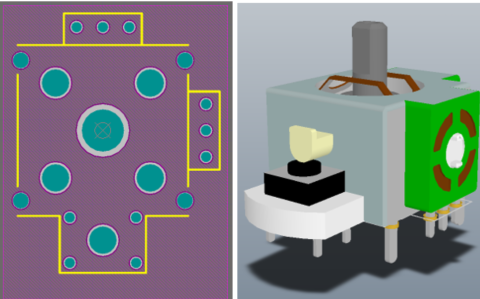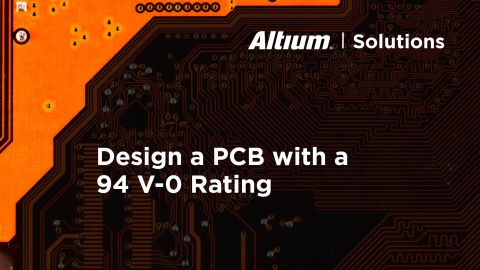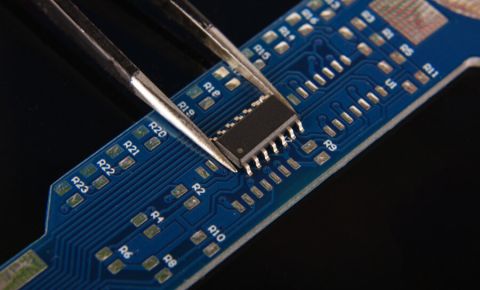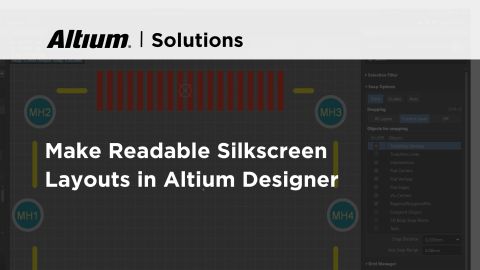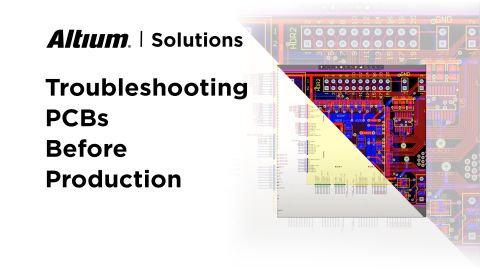MIDs Make a Comeback as Vertical SMD Modules for Your PCB

There’s one area of PCB design that hasn’t received enough attention: molded interconnect devices, or MIDs. These devices are essentially plastic molded substrates with traces running along any surface, including at right angles and running vertically. I’ve never designed these myself, but they are certainly impressive from a design and manufacturing standpoint.
According to an article in Plastics Technology, MIDs were supposed to make a comeback all the way back in 2005. At the time, tooling needed to produce these devices at any level of scale was based on injection molding, meaning it needed to be totally customized for every MID. From a design perspective, electronics designers were required to use MCAD software or proprietary ECAD utilities to create MID designs, which made design verification workflows very inefficient. For PCB designers, the most common problem in PCB design software is the inability to route traces for these devices in a 3D PCB layout, something which is required to create MIDs.
HARTING is the industry's leading supplier of MID products, and they recently developed a range of innovative component carrier MID substrates that act as vertical adapters for devices with standard footprints. These component carriers allow a designer to vertically mount an SMD part with a standard footprint, and the carrier piece is soldered to the board just like any other SMD component. Altium and HARTING have now partnered to bring PCB designers an easy way to create and use MIDs in new PCBs.
Altium users can use the new 3D Routing extension to design their own component carriers, which can be mounted vertically in a standard assembly process. Components are supplied to assembers in a standard tape-and-reel and compatible with automated pick-and-place equipment. If you’ve always wanted to vertically mount components or entire circuits, but without the expense of adding a flex section to your design, the new 3D Routing extension with HARTING’s component carrier designs provides a unique solution.
An MID as a Vertical Component or Circuit Mount
MIDs are normally viewed as a solution for routing interconnects, or for mounting components, anywhere on a 3D surface, such as the inside of a box or enclosure. One application area that isn’t discussed is the use of these devices as a board-mounted adapter for an SMD component. These SMD component mounts can sit vertically on a board or at an odd angle, and this opens a range of new applications that would normally require a flexible PCB or a flex ribbon in a rigid-flex design.
HARTING takes this approach with their current line of SMD component carrier products. These MIDs hold a standard SMD component package (such as SOT23-6 or SOIC-8), but they have their own SMD footprint that mounts to a standard PCB. This allows a particular component to be oriented vertically without needing to design a flex ribbon section into a rigid board. It also cuts down the costs required to manufacture flexible PCBs and even more importantly, the associated manual assembly costs in the subsequent process steps
HARTING supplies their populated component carriers to their customers as complete assemblies packaged in tape-and-reel format. The assembled components are glued onto the carrier which makes the complete assembly suitable for automatic pick-and-place and subsequent reflow processes, and allows it to be treated as a single component by the customer.

Now with the new 3D Routing extension in Altium Designer, users can create their own surface-mount component carrier MIDs that can be customized to hold any SMD components. In addition to customizing the footprint and pinout on the bottom of the carrier, the component layout and routing on the surfaces can be fully customized with Altium Designer’s 3D layout and routing features.
Creating an Component Carrier MID
HARTING’s component carrier MID products start with a standard 3D shape and SMD footprint. Once you have designed your circuit layout on the surface of the substrate, HARTING can fabricate and ship these custom carriers to your assembly house.
Circuits are placed on the component carrier within the regular PCB design workflow in a standard Altium Designer project, where the MID has its own schematic and physical layout. These MIDs have a standardized PCB footprint, but the designer is free to customize the pinout for the device and the arrangement of components on the body of the MID. The footprints for the placed components are imported from existing components in your existing library. Once the MID is designed, the user can include it in their project by designing their required pinout in the schematic symbol, and this is combined with the land pattern and 3D body. It can then be placed in the PCB layout just like any other component.
Once a carrier substrate is imported into Altium Designer and components are synchronized from the schematic to the PCB Editor, the components can be arranged on the vertical surface using Altium’s 3D layout features. Simply drag components into the required positions as shown below.

After placement, the standard 3D routing features in Altium Designer can be used to route traces between components on the surface. Routing is possible on any surface of the substrate, including around to the bottom side of the device so that it can connect to pads on the MID.

Once the component carrier design has been completed, a single menu command generates the manufacturing data required by HARTING’s production processes.
Component Carrier MID Applications
The ability to vertically mount circuits and customize footprints on an MID opens up some interesting applications that are costly or impractical with a traditional approach.
- Vertically-mounted sensors - Components like SMD temperature sensors, Hall effect sensors, light sensors, and their supporting components can be mounted on the carrier MID. These carrier MIDs can be placed against the edge of an enclosure for easy access to the external environment, something which would normally require a flex section or a separate board with a cable.
- SMD adapters for drop-in replacement parts - These MIDs can be designed with a standard footprint on the bottom side so that these devices can act as drop-in replacements when components go out-of-stock. One possibility is to swap out an out-of-stock part with an alternative that has a different footprint; the MID can be customized as an adapter between the two components.
- RF functionality - HARTING can build these component carrier MIDs with different base polymers so that the dielectric constant, loss tangent, and other RF properties can be customized in the substrate material. This opens up the possibility of implementing vertical antenna structures or RF circuits operating in standard bands in GHz bands on these MIDs.
- 90° connectors - Some specialty connectors are only available as SMD components oriented vertically. The carrier MID can be used to place these connectors at a 90° angle with respect to the main PCB. This enables unique board-to-board connections or additional clearance for cable access.
Perhaps the biggest advantage for these components is their modularity. Entire circuits can be placed on these MIDs, and the MIDs can be given a standard footprint, allowing MIDs to be swapped in and out of a design without changing the main PCB layout or MID pinout. This opens up a whole new range of functionality as well as a low-cost approach to MID implementation for PCB designers.
If you want to take a modular approach with MIDs, contact us at 3d-routing@altium.com to find out how to access the new 3D Routing tool in Altium Designer®. To start designing your own component carrier today, HARTING's 3D substrates are available to download here, and some helpful design guidelines can be found in their whitepapers here.
We have only scratched the surface of what’s possible with Altium Designer on Altium 365. Start your free trial of Altium Designer + Altium today.



